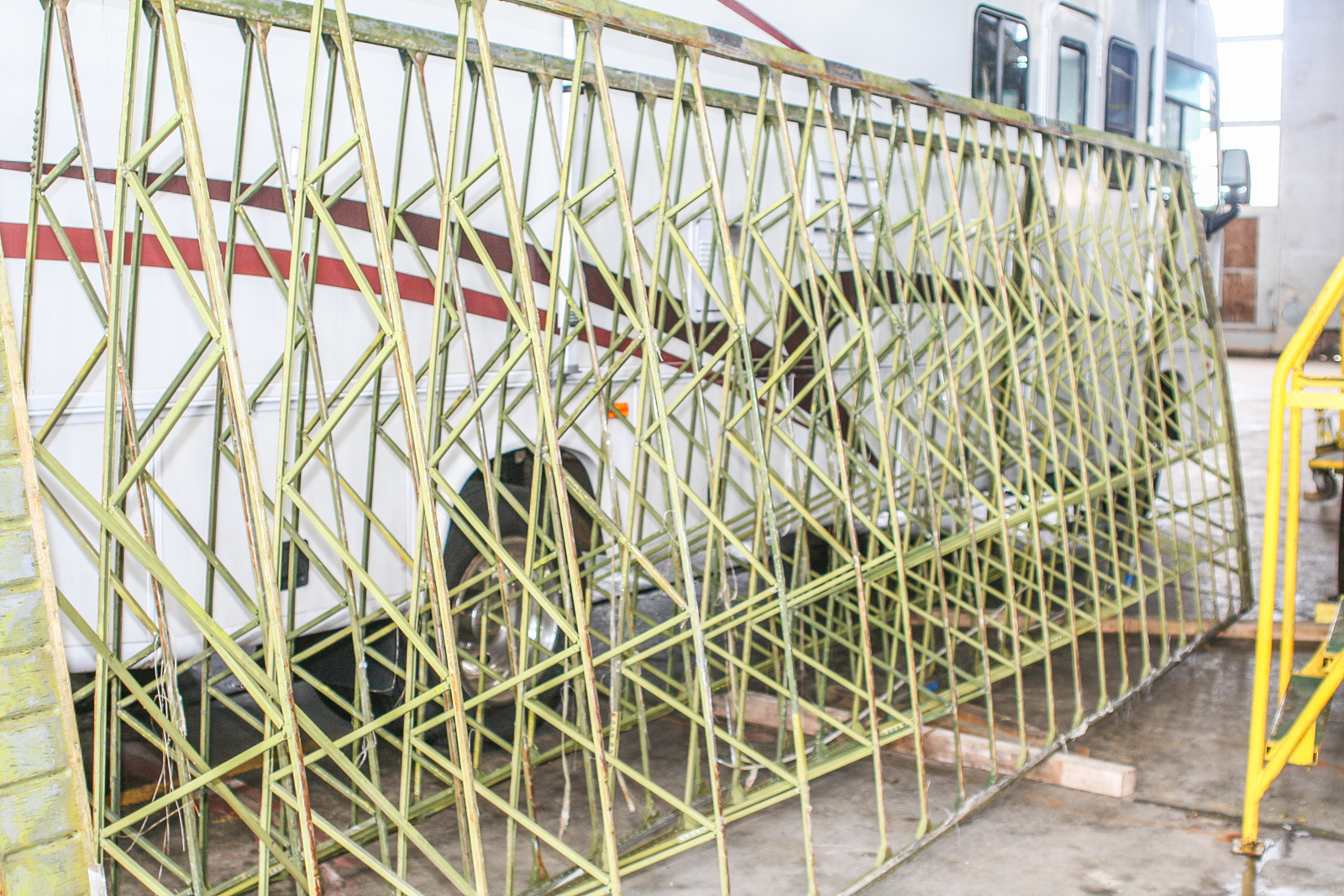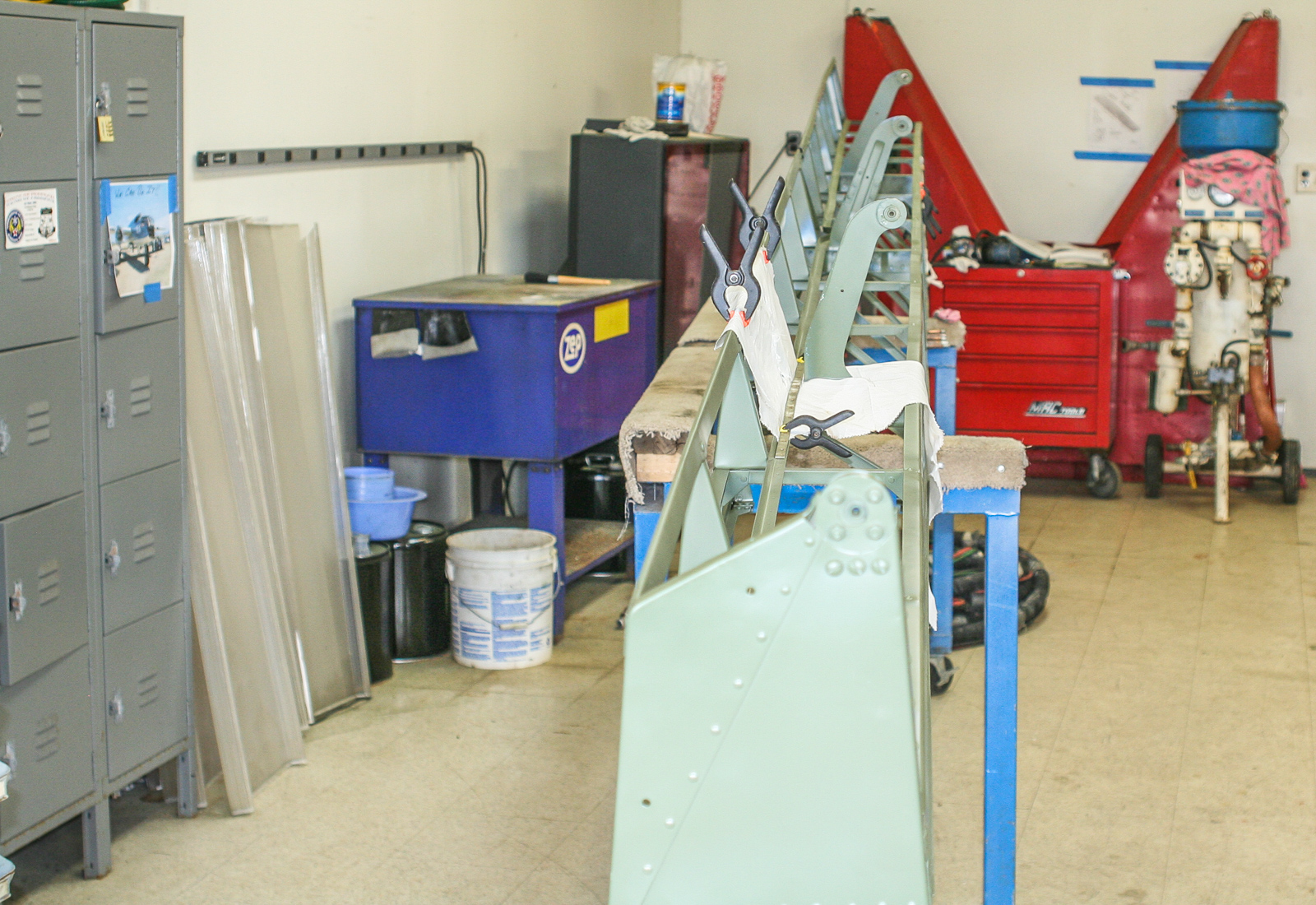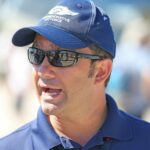

Over the years, the Commemorative Air Force has owned and operated five different PBY Catalinas, but unfortunately the type has so far not enjoyed much longevity with the organization with PBY-6A Bu.64000 being written off in a crash in 1975; PBY-5A Bu.46590 succumbing to corrosion in 1984 (and now parted out); PBY-6A Bu.63998 being written off in an accident in 1986; and in a bizarre twist of fate, PBY-6A Bu.64097 was flipped on its back in a heavy storm in May, 1998. Her replacement, PBY-6A Bu.64092, flew for a few years while still in its firebomber configuration, but again, significant fuselage corrosion grounded her as well.
However, the CAF has never given up on the Catalina, which played such a crucial role in WWII, both in long-range reconnaissance and U-boat suppression, not to mention Air Sea Rescue and other vital activities. The CAF’s Lake Superior Squadron, based in Duluth, Minnesota, is currently hard at work restoring a PBY back to flying condition. They are doing something radical, and probably never before attempted outside of the military. They are rebuilding the damaged, but relatively corrosion-free fuselage of Bu.64097 and replacing the crumpled wing with that from their other former fire bomber, Bu.64092. It is a massive undertaking, but the team has made remarkable progress since the project began in 2009. They have already grafted the two aircraft together and are well on the way to forming one airworthy airframe. Since the fuselage came from Bu.64097, that will be the identity of the completed aircraft.
We are grateful to the CAF Lake Superior Squadron for providing us the following series of photographs and captions to show some of the progress so far….
The above three images show the left wing trailing edge where the aileron attaches. This section is now in the process of being recovered. The right side is currently being soda blasted. Then comes an inspection checking for damage that needs to be repaired or replaced. Then the area will be painted Zinc chromate for corrosion prevention. Then comes the fabric covering.



The above picture shows one of the center section trailing edges. After the outer sections are finished the large inner sections will undergo the same treatment the outer sections had. Altogether there are four of these large parts, but it will be easier to work on them than the outside parts due to their large flat surfaces as compared to the multiple curves and aileron attachment points to work around on the outer panels.
The above three images show the trailing edge being test-fitted to the wing. The team is checking to make sure everything still fits properly before covering the section with fabric.
The above two images show the tail section minus the control surfaces. This area was completely destroyed by the wind storm at Fleming Field in St Paul MN. The fabric covered controls are finished and are now stored awaiting their mounting as one of the last parts of the restoration.
The above three images show the interior of the aircraft. There isn’t a lot to see here just yet as most of the insides were been removed for restoration, including the floorboards. There is a strong chance that this area will be painted this summer.
The above two images show the R-1830 engines. Rebuilding these will be the last effort in the restoration, although the Squadron does periodically manually turn the engines through to keep them lubricated. They will probably undergo their restoration sometime this summer.

The final two images show the rear wing spar where the trailing edges will go once their restoration is complete. This area will be stripped, inspected and painted before the trailing edge sections are attached.
Since its participation in the 12 Planes of Christmas Program last year, the PBY project has received a much needed boost. The money donated was used to purchase sheet metal for patching key areas of the aircraft’s skin, particularly where corrosion was presenting a challenge. Paint was also purchased for the aircraft’s entire upper and lower surfaces– to prevent any additional corrosion issues.

AAR Corp, a large aircraft repair facility, has committed to refurbishing the aircraft’s tail. The Lake Superior College’s School for Aviation will be using the aircraft to teach students how to inspect for corrosion, and will also be working on the aircraft’s fire walls. The squadron itself continues to work on the iconic wing, needing funds to purchase its fabric covering, and additional soda to blast parts of the wing structure.
One of the key parts they are currently searching for is a crucial bolt which holds the wing on. The bolt they have needs to be re-plated or replaced to bring it back to the correct diameter to safely hold the wing in flight.
Vision

When the aircraft is completed it will fill a vital role in the CAF’s national aircraft collection, telling the story of the brave men who used these aircraft in the Atlantic and Pacific theaters, as a patrol aircraft, rescue platform, torpedo and night bomber.
 To support the Lake Superior Squadron’s PBY in the 2016 12 Planes of Christmas Campaign click HERE.
To support the Lake Superior Squadron’s PBY in the 2016 12 Planes of Christmas Campaign click HERE.
And that’s where we are today. Many thanks to Kevin Parks of the CAF Lake Superior Squadron for showing us all the hard work which has occurred. WarbirdsNews will bring our readers more details as they occur. For those interested in volunteering or contributing to the project, please do click HERE to find out how to contact the Lake Superior Squadron.
Click on the banner
Related Articles
Born in Milan, Italy, Moreno moved to the U.S. in 1999 to pursue a career as a commercial pilot. His aviation passion began early, inspired by his uncle, an F-104 Starfighter Crew Chief, and his father, a military traffic controller. Childhood adventures included camping outside military bases and watching planes at Aeroporto Linate. In 1999, he relocated to Atlanta, Georgia, to obtain his commercial pilot license, a move that became permanent. With 24 years in the U.S., he now flies full-time for a Part 91 business aviation company in Atlanta. He is actively involved with the Commemorative Air Force, the D-Day Squadron, and other aviation organizations. He enjoys life with his supportive wife and three wonderful children.




















Be the first to comment
Graphic Design, Branding and Aviation Art